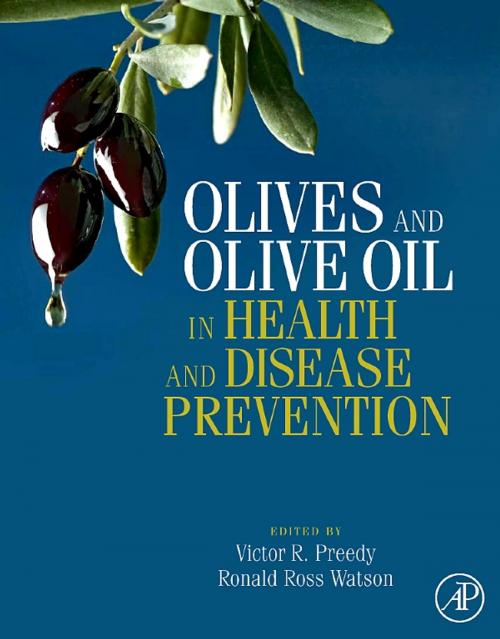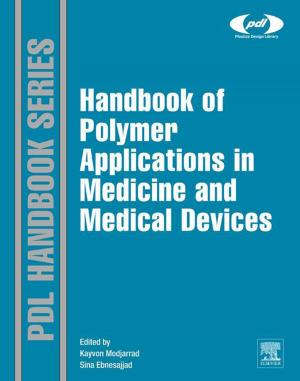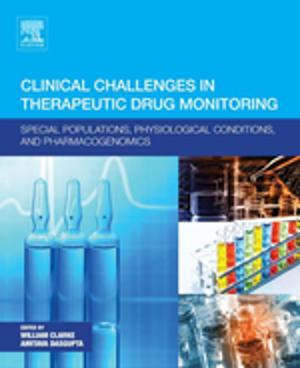Olives and Olive Oil in Health and Disease Prevention
Nonfiction, Science & Nature, Technology, Food Industry & Science| Author: | ISBN: | 9780080922201 | |
| Publisher: | Elsevier Science | Publication: | March 23, 2010 |
| Imprint: | Academic Press | Language: | English |
| Author: | |
| ISBN: | 9780080922201 |
| Publisher: | Elsevier Science |
| Publication: | March 23, 2010 |
| Imprint: | Academic Press |
| Language: | English |
Long used in sacred ceremonies and associated with good health, the nutritional and health promoting benefits of olives and olive oils have been proven by an ever-increasing body of science. From cardiovascular benefits to anti-microbial, anti-cancer, antioxidant activity and effects on macrophages and aptoptosis to cellular and pathophysiollogical process, olives and olive oils are proving important in many healthful ways.
For example, reactive components in olive oils or olive oil by-products have now been isolated and identified. These include tyrosol, hydroxytyrosol, 3,4-dihydroxyphenyl acetic acid elenolic acid and oleuropein. Oleic acid is the main monosaturated fatty acid of olive oil. These have putative protective effects and modulate the biochemistry of a variety of cell types including those of the vascular system. Some but not all components have been characterised by their putative pharmacological properties. It is possible that usage of these aforementioned products may have beneficial application in other disease. However, in order for this cross-fertilization to take place, a comprehensive understanding of olives and olive oils is required. Finding this knowledge in a single volume provides a key resource for scientists in a variety of food an nutritional roles.
Key Features:
* Explores olives and olive oil from their general aspects to the detailed level of important micro-and micronutrients
* Includes coverage of various methodologies for analysis to help scientists and chemists determine the most appropriate option for their own studies, including those of olive-related compounds in other foods
* Relates, in a single volume resource, information for food and nutritional chemists, pharmaceutical scientists, nutritionists and dieticians
* Presents information in three key categories: General aspects of olives an olive oils; Nutritional, pharmacological and metabolic properties of olives and olive oil; Specific components of olive oil and their effects on tissue and body systems
Long used in sacred ceremonies and associated with good health, the nutritional and health promoting benefits of olives and olive oils have been proven by an ever-increasing body of science. From cardiovascular benefits to anti-microbial, anti-cancer, antioxidant activity and effects on macrophages and aptoptosis to cellular and pathophysiollogical process, olives and olive oils are proving important in many healthful ways.
For example, reactive components in olive oils or olive oil by-products have now been isolated and identified. These include tyrosol, hydroxytyrosol, 3,4-dihydroxyphenyl acetic acid elenolic acid and oleuropein. Oleic acid is the main monosaturated fatty acid of olive oil. These have putative protective effects and modulate the biochemistry of a variety of cell types including those of the vascular system. Some but not all components have been characterised by their putative pharmacological properties. It is possible that usage of these aforementioned products may have beneficial application in other disease. However, in order for this cross-fertilization to take place, a comprehensive understanding of olives and olive oils is required. Finding this knowledge in a single volume provides a key resource for scientists in a variety of food an nutritional roles.
Key Features:
* Explores olives and olive oil from their general aspects to the detailed level of important micro-and micronutrients
* Includes coverage of various methodologies for analysis to help scientists and chemists determine the most appropriate option for their own studies, including those of olive-related compounds in other foods
* Relates, in a single volume resource, information for food and nutritional chemists, pharmaceutical scientists, nutritionists and dieticians
* Presents information in three key categories: General aspects of olives an olive oils; Nutritional, pharmacological and metabolic properties of olives and olive oil; Specific components of olive oil and their effects on tissue and body systems















